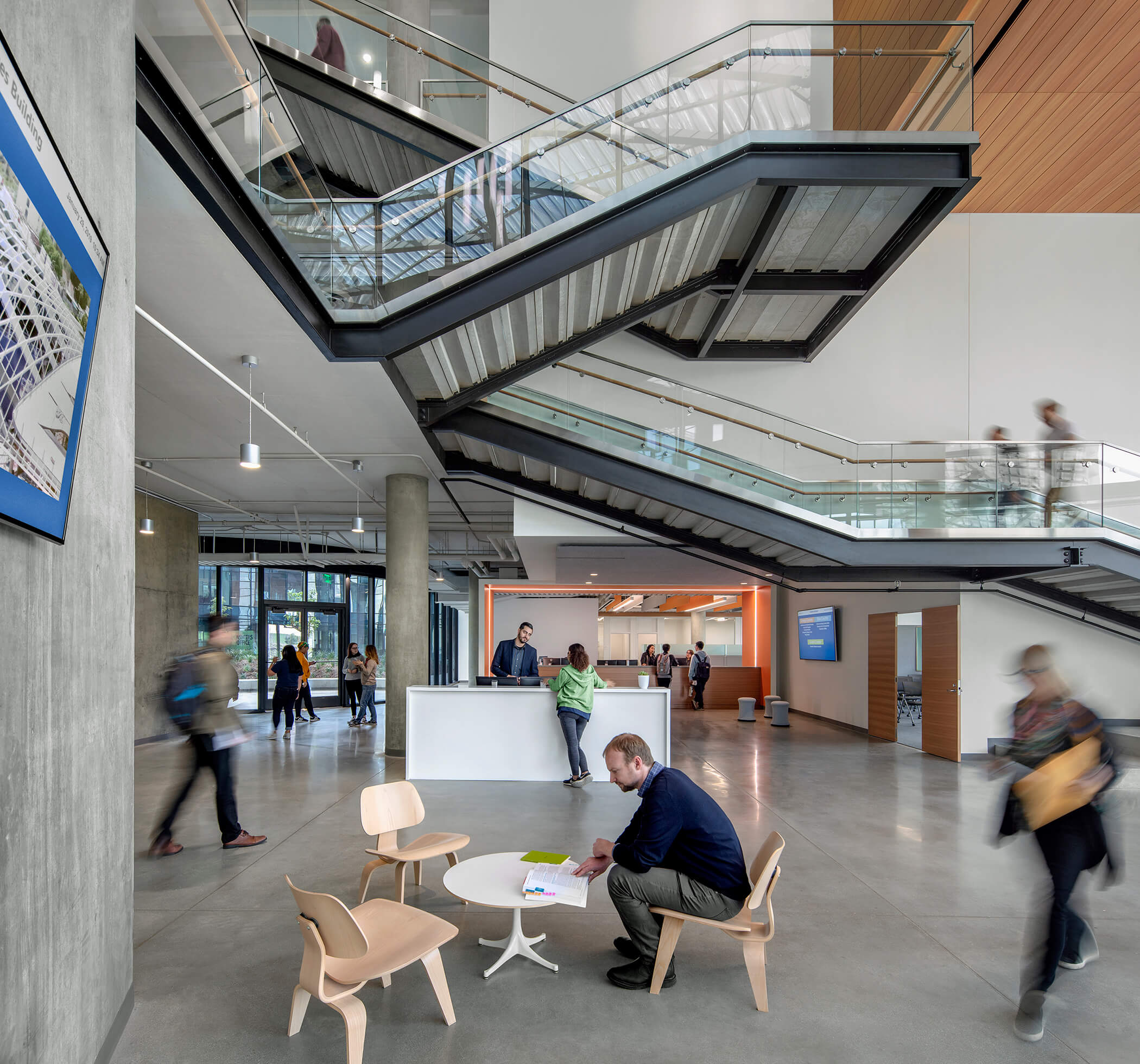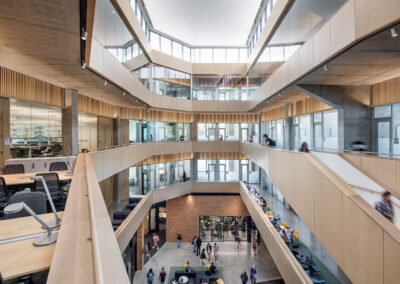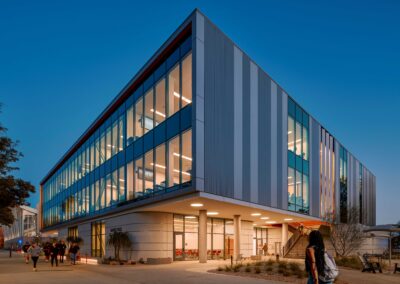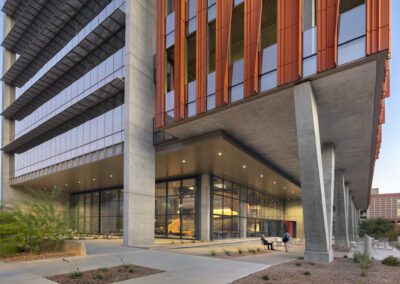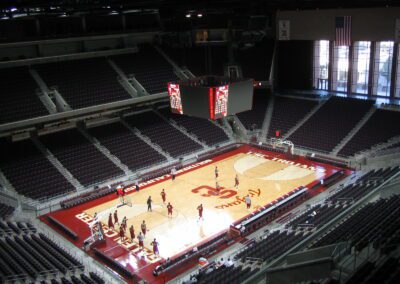,Details
- Size: 140,000 square feet
- Completion Date: 2018
Team
- Architect: CO Architects
- Contractor: C.W. Driver
Awards
- California Award of Merit in Southern California, Higher Education/Research, 2019 ENR California Best Projects
- Architectural Design /Educational Buildings, 2019 Architecture Masterprize Winner
- Honor Award, Educational Environments Category, 2019 SCDF Southern California Development Forum
Serving as the new gateway into the campus, Cal Poly Pomona’s 138,400 square foot Student Services Building (SSB) welcomes students registering for classes, prospective students and their families, and alumni actively involved in the campus community. The building houses the office of the president, division of university advancement, and divisions of academic, student and administrative affairs.
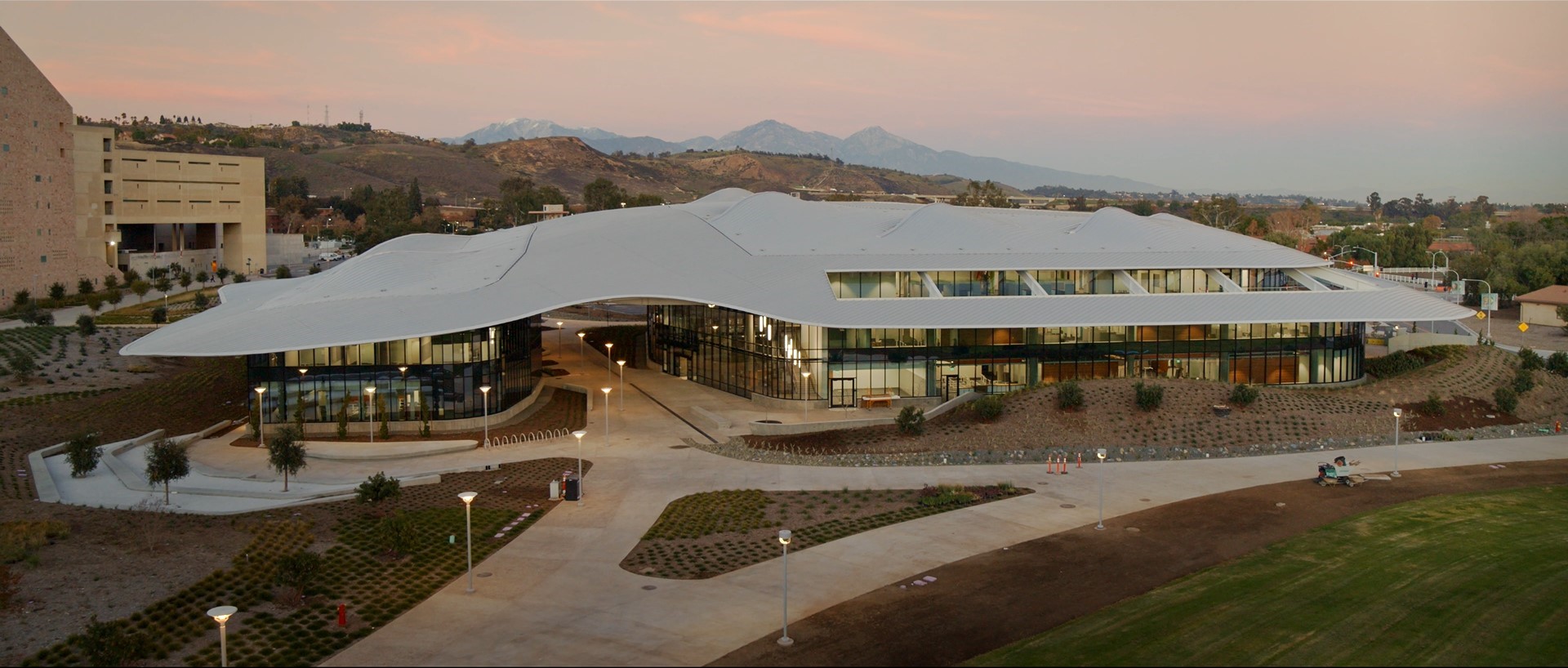
The building is topped with an undulating roof that spans over two separate structures that draws its inspiration from the surrounding hills and San Gabriel mountains, serving as an iconic landmark for the campus. The shape and orientation of this distinguishing feature aims to optimize energy efficiency, maximize daylight serving an essential role in passive solar design.
In plan, the SSB consists of 3-story and 2-story concrete structures separated by a spacious breezeway that doubles as a new campus corridor. The open breezeway separates the 3-story main building from the 2-story wing housing the multi-purpose center and human resources department. The undulating roof spans the breezeway and connects the two structures.
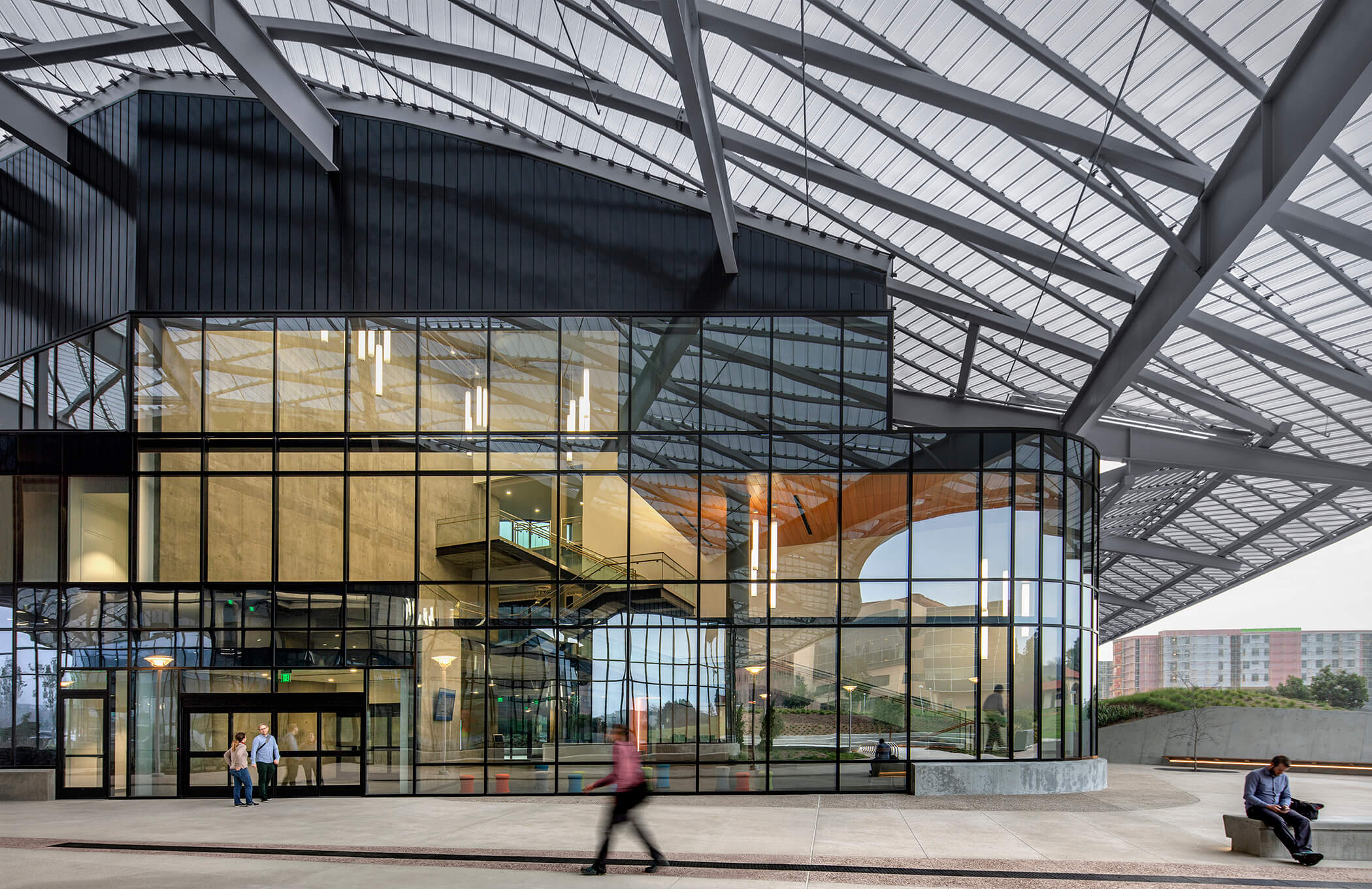
Structurally, the roofscape involved innovative design at every turn. Lateral designs resolved unique shapes with a diaphragm that efficiently spanned nodes of lateral resistance and eliminated long distance cantilevers. Resulting interiors kept concrete walls out of view and ensured the desired light, airy space befitting students and the activities within. Additionally, in-depth analysis resolved a complex geometry of interconnected yet disconnected structures where long span steel girders and their connections were designed as struts linking the building when they were moving toward or away from each other.

Revit Model
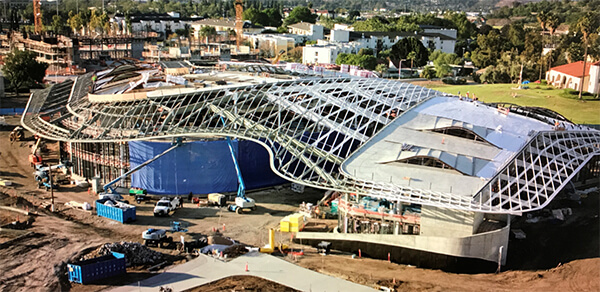
Roof Construction
Efficiency of material and labor was a major goal of the structural design. JAMA determined which parts of the steel supporting the curved roof geometry should be straight (wide flange and HSS10x beams) and which should be curved (HSS4x beams) to match the complex curves of the roof.
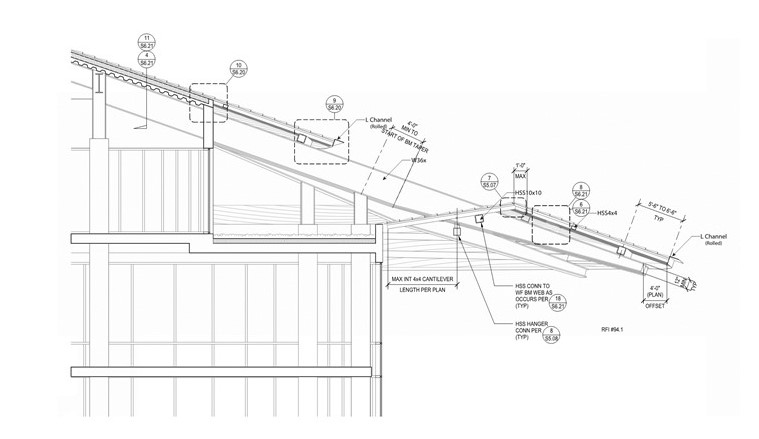
Typical Roof Section
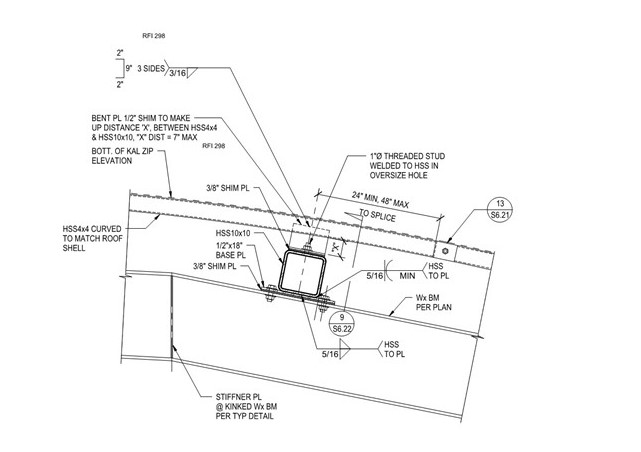
HSS4x4 connection to HSS10x10 with shim detail
Pre-planning streamlined construction and heightened efficiencies by determining straight versus curved roof steel supports and minimizing asymmetrical pieces. Design of a light metal field-screwed shim, adjustable vertically and rotationally about two axes, allowed for exact adjustment during construction, increased construction speed, and decreased field welding costs.
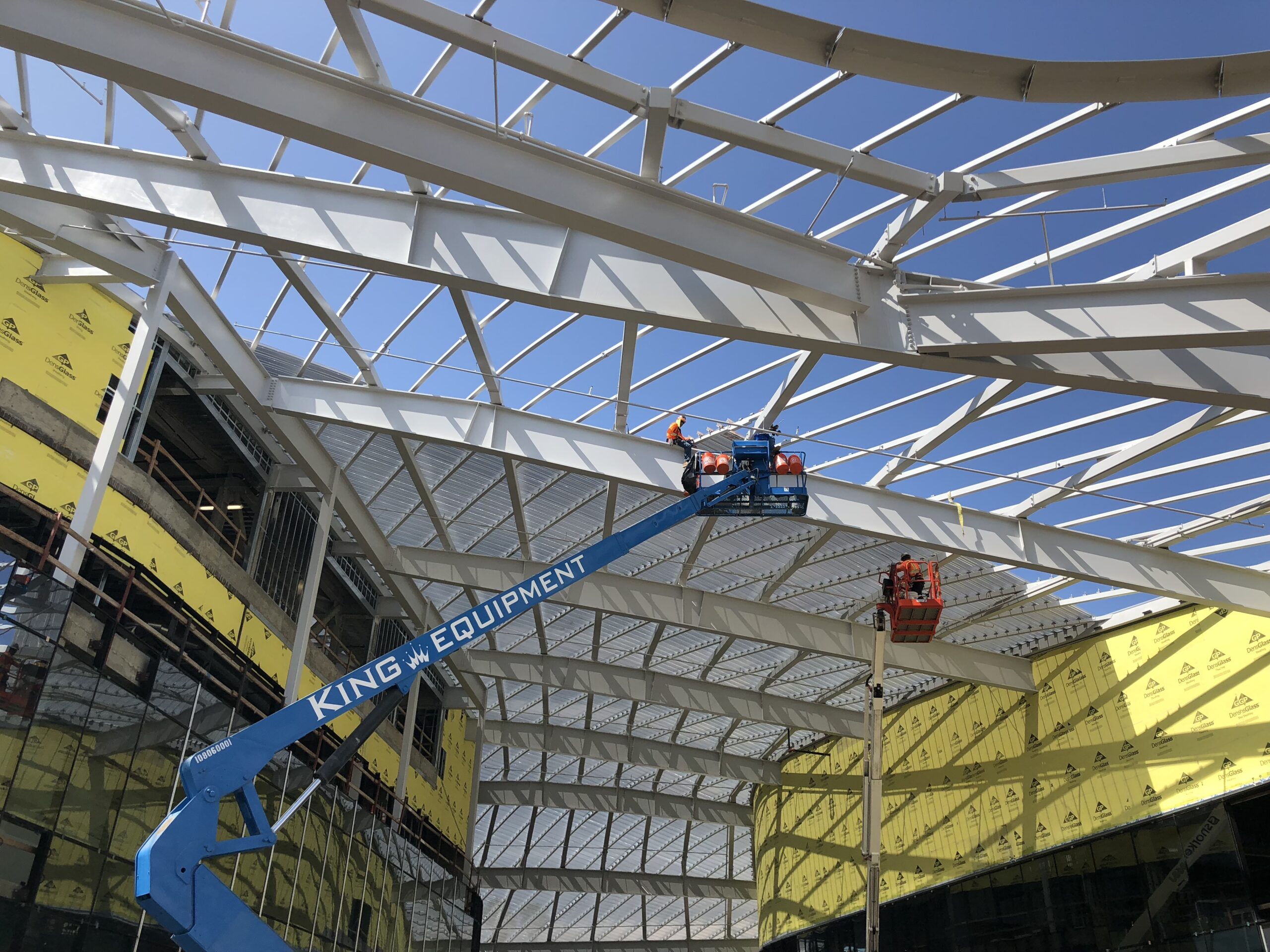
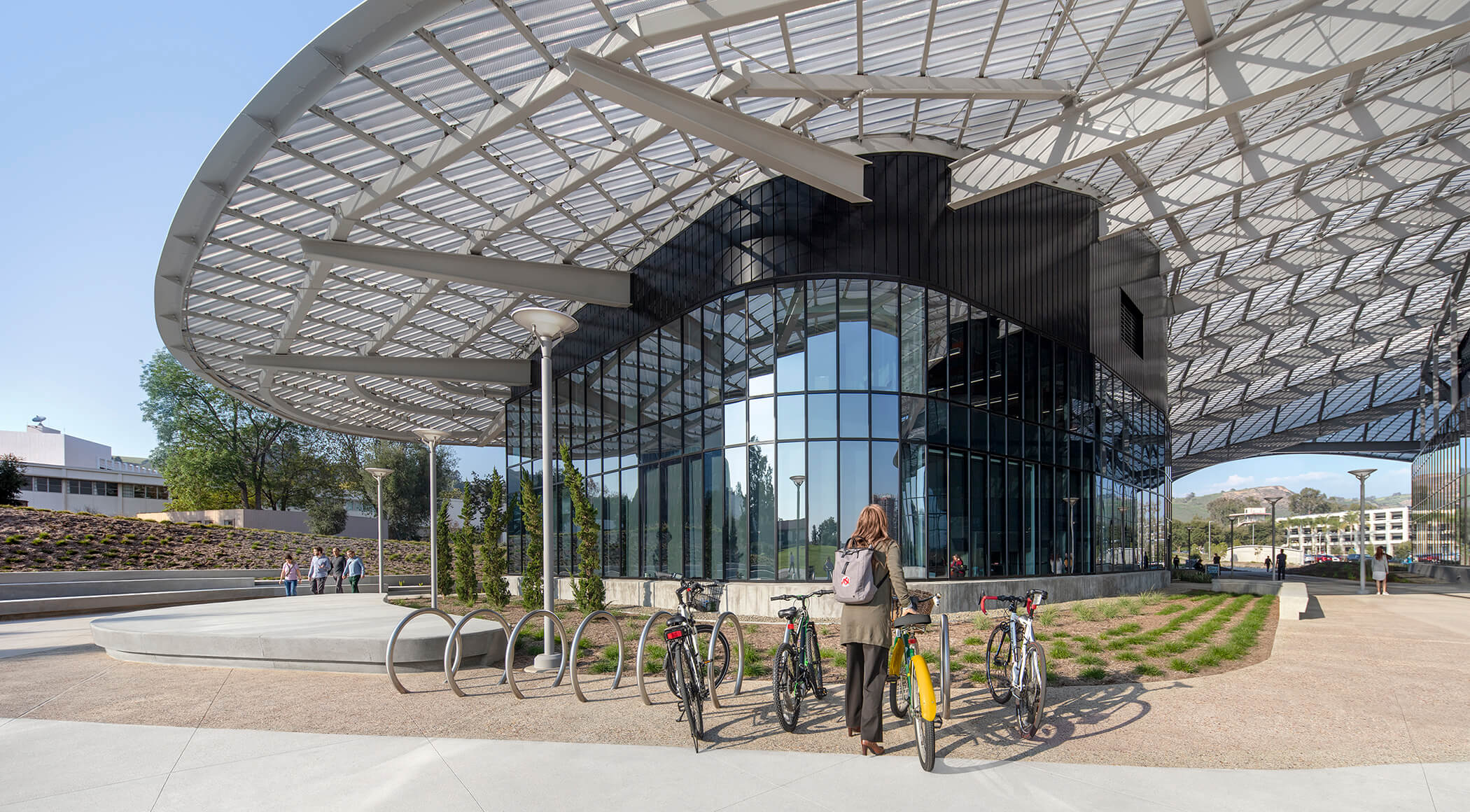
Throughout the process the team employed collaboration tools and advanced technical applications for increased constructability and efficiencies. Workflows were developed to pass model data between software platforms to share and coordinate complex roof geometry and meet the analytical demands of structural, architectural and fabrication disciplines. Efforts paid off as not a single RFI for metal roof installation was issued during construction. This award-winning facility serves as a sustainable campus icon that exemplifies structural ingenuity and creativity for students and the community alike.
